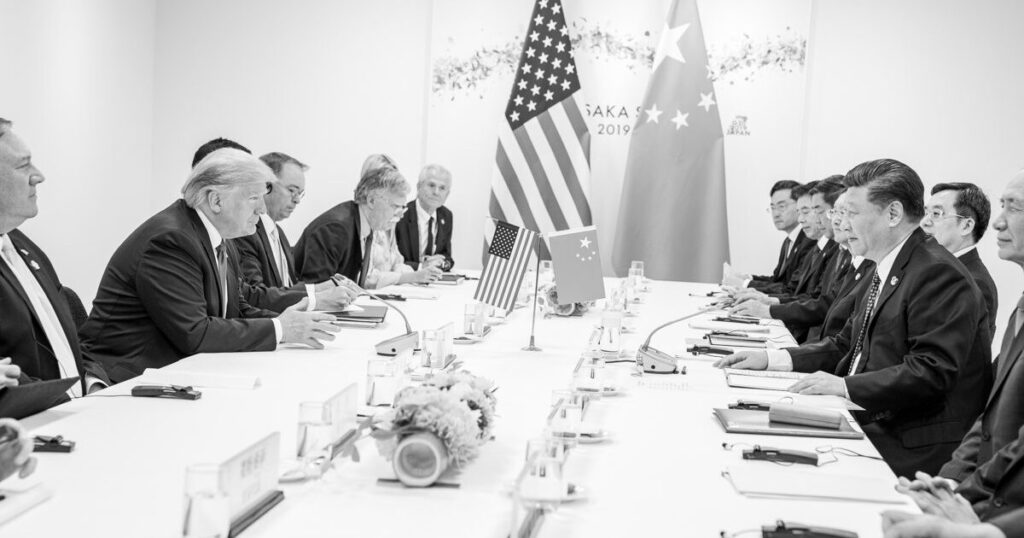In 2016, Donald Trump positioned himself as a tough adversary of China during his presidential campaign, advocating for aggressive trade measures and tariffs aimed at curbing the economic and military assertiveness of the Chinese regime. Despite criticism from Democrats and mainstream media, who condemned his approach as a catalyst for a detrimental trade war, the unfolding geopolitical landscape seems to validate Trump’s warnings. As the 2024 election approaches, he announces an even more assertive policy, including the potential implementation of 100% tariffs on Chinese goods. Proponents of a softer stance argue for closer economic ties with China, suggesting that figures like Kamala Harris would better serve U.S. interests; however, these criticisms appear increasingly untenable in light of current circumstances. The Biden administration not only maintained Trump’s tariffs but also intensified them along with technology access restrictions, thus embodying a continuity in strategy toward China deemed necessary for national security.
The U.S. economic decoupling from China has emerged as an issue of paramount importance not only for maintaining competitive advantages but also for securing national interests. The financial burden of exporting from China to the U.S. incentivizes American and European manufacturers to relocate production to the U.S. or other allied nations including Vietnam, Thailand, India, and Indonesia. This shift would not only help create jobs and generate tax revenue domestically but also reinforce the economic resilience of U.S. allies while simultaneously diluting China’s influence within the region. China’s status as America’s foremost national security threat underscores the urgency of this decoupling, as continuing to allow American trade and investment to flow into China appears increasingly reckless.
Critics of Trump’s trade war argue that his tariffs inadvertently harmed American consumers, resulting in increased prices on everyday goods. However, it’s essential to understand that the purpose of these tariffs is to limit imports from China and encourage domestic production, thereby benefiting the U.S. economy in the long run. Tariffs serve as a deterrent to buying foreign products, encouraging consumers to support domestic alternatives and generating significant revenue for the U.S. government. While some critics point to an unchanged trade deficit, the argument must shift towards the overall wealth transferred to China through trade. Increasing tariffs further, as Trump suggests with a potential 200% tariff rate, implies a calculated effort to diminish China’s financial advantages over time.
Opponents of the Trump administration’s policy often highlight the retaliatory measures imposed by China, which adversely affected American farmers who depended on exports. While legitimate concerns about market disruptions exist, parallels to historical conflicts make these criticisms seem less weighty. Economic strategies during the Cold War exemplify that certain adversaries should be confronted head-on rather than engaged with trade. In light of this view, allowing trade with China amid ongoing tensions resembles enabling commerce with a regime that poses a significant security threat—echoing sentiments from previous global confrontations. Both critics and supporters acknowledge that China’s unfair trade practices, including intellectual property violations, have not significantly changed, reinforcing the need for more stringent trade regulations or a complete cessation of trade altogether.
Moreover, the narrative that Trump’s trade war disrupted global supply chains and stunted economic growth fails to consider the reluctance of U.S. allies to reduce their dependence on China. Countries like Germany and France seemingly undermine efforts to mitigate reliance on Chinese manufacturing. The perceived lack of unified resolve among U.S. allies necessitates a stronger diplomatic initiative akin to Trump’s original policies, which might compel these nations to rethink their own trade routes and supply chains in favor of sustainable partnerships excluding China. Ultimately, both historical precedent and current realities clarify that letting trade policies respond in a more robust manner to China’s tactics is essential.
Lastly, the narrative that Trump’s hardline stance has exacerbated U.S.-China relations must be contextualized by the fact that China’s aggressive posture has persisted under the current Biden administration. Despite purported calls for softer diplomatic engagement with China, escalating threats—ranging from cybersecurity violations to military posturing—remain a critical concern for U.S. national interests. This suggests that a lenient approach may not yield favorable outcomes and reinforces the argument for a policy emphasizing strengthened alliances and reduced economic ties with China. Moving forward, it appears increasingly evident that Trump’s initial assessment of the need to confront China was correctly aligned with America’s long-term economic and security goals, warranting an acceleration of these efforts in the face of continued Chinese aggression.

